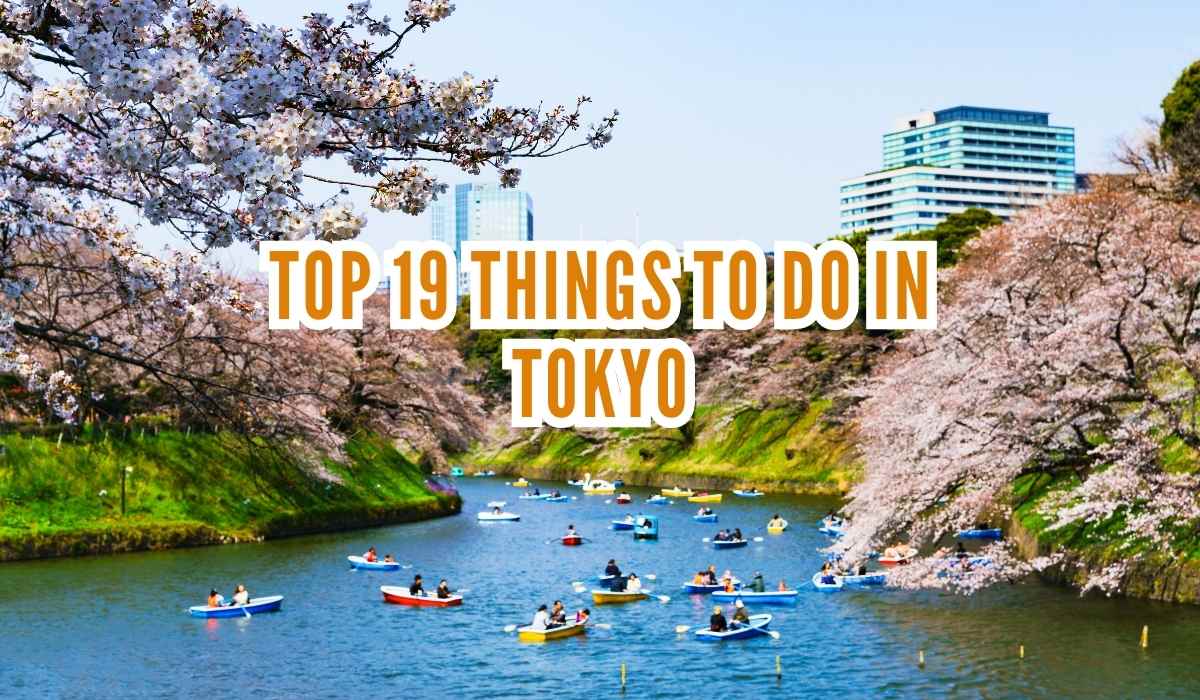Tokyo’s Cool Mix of Old and New : The 19 Best Things To Do In Tokyo
Hey there! So, you wanna know about Tokyo? It’s like this super cool city where you can see some really old stuff, like temples, right next to these huge, shiny skyscrapers. Imagine walking down a street, you look one way and there’s this ancient temple that’s been there for, like, hundreds of years, and then you turn your head and BOOM, there’s this massive tower with all the latest tech. That’s Tokyo for you!
We’re gonna take you through all the must-see spots in Tokyo. Whether you’re into checking out old-school temples and getting a taste of Japan’s history, or you’re more about seeing the tallest buildings and the crazy busy streets, we’ve got you covered. Tokyo’s got this awesome vibe because it’s both super old and super new at the same time. Trust me, you’re gonna wanna see all of it. So, let’s get started on this journey and dive into what makes Tokyo a place you’ve gotta check out.
Historical and Cultural Attractions:The 19 Best Things To Do In Tokyo
Senso-ji Temple: A Trip Back in Time
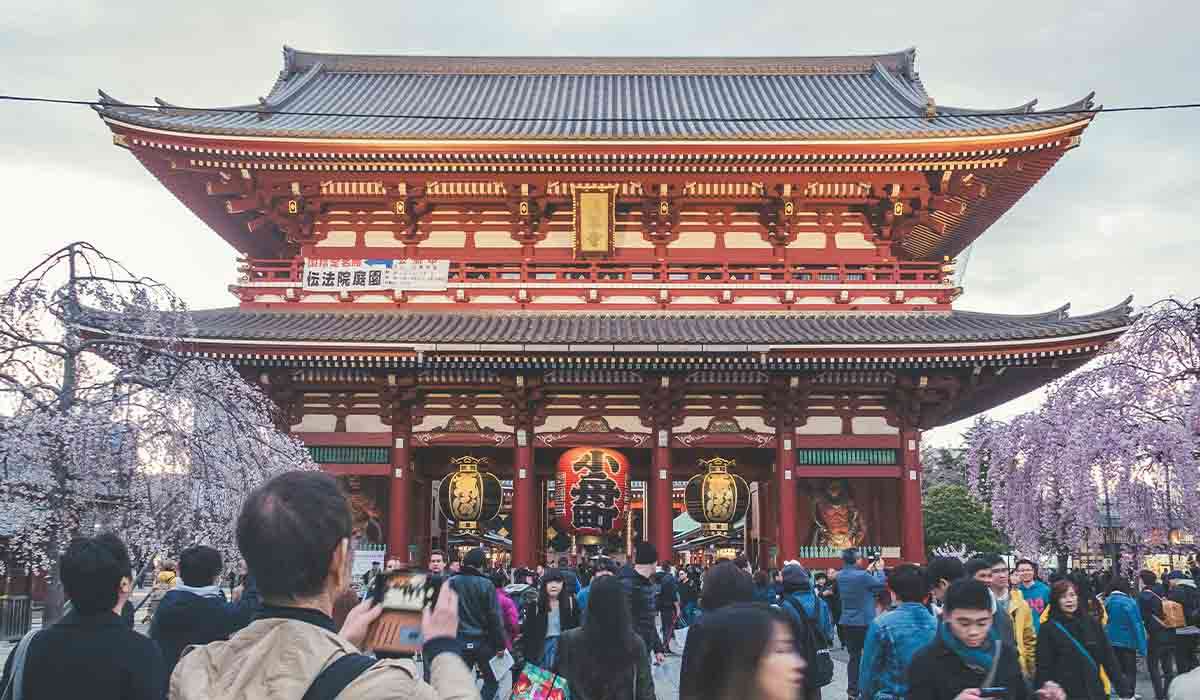
The 19 best things to do in Tokyo
In the heart of Tokyo, there’s this awesome place called Senso-ji Temple. It’s not just any old temple; it’s actually the oldest one in the whole city! Imagine stepping back into a time when samurais were a thing, and that’s the vibe Senso-ji has. Built way back in the 7th century, this place has seen Tokyo grow up around it.
So, why is Senso-ji so cool? First off, the history is super interesting. The story goes that two fishermen found a statue of Kannon, the goddess of mercy, in the river. They showed it to their village chief, and he was so amazed by it that he turned his own house into a temple so everyone could come and see it. Fast forward a few centuries, and now we have Senso-ji, a massive complex that’s a must-see for anyone coming to Tokyo.
Walking up to Senso-ji, you’ll first pass through the Kaminarimon or “Thunder Gate.” It’s got this huge lantern that’s super Instagram-worthy. Once you’re through the gate, you hit Nakamise Street. It’s this shopping street where you can buy all sorts of Japanese souvenirs, like fans, kimonos, and those delicious rice crackers. It’s like a mini adventure before you even get to the temple.
The architecture at Senso-ji is something out of a movie. The main hall and the five-story pagoda are seriously impressive, with all these bright colors and intricate designs. It’s like, every corner you turn, there’s something new to see. And the atmosphere is pretty special too. There’s always incense burning, and you can see people praying and getting their fortunes told. It’s a whole vibe.
But what’s really awesome about Senso-ji is how it feels like you’re stepping into a piece of history, right in the middle of modern Tokyo. It’s this peaceful spot where you can take a break from the craziness of the city and maybe think about all the people who’ve visited over the last thousand years.
Visiting Senso-ji isn’t just about checking out a beautiful temple; it’s about experiencing a part of Tokyo’s soul. It’s a place where the past and present meet, and you can feel the spirit of Japan. So, when you’re in Tokyo, make sure to spend some time here. Walk around, soak in the sights, and maybe even make a wish at the temple. Who knows? It might just come true.
Kyu Asakura House: A Hidden Gem in Tokyo
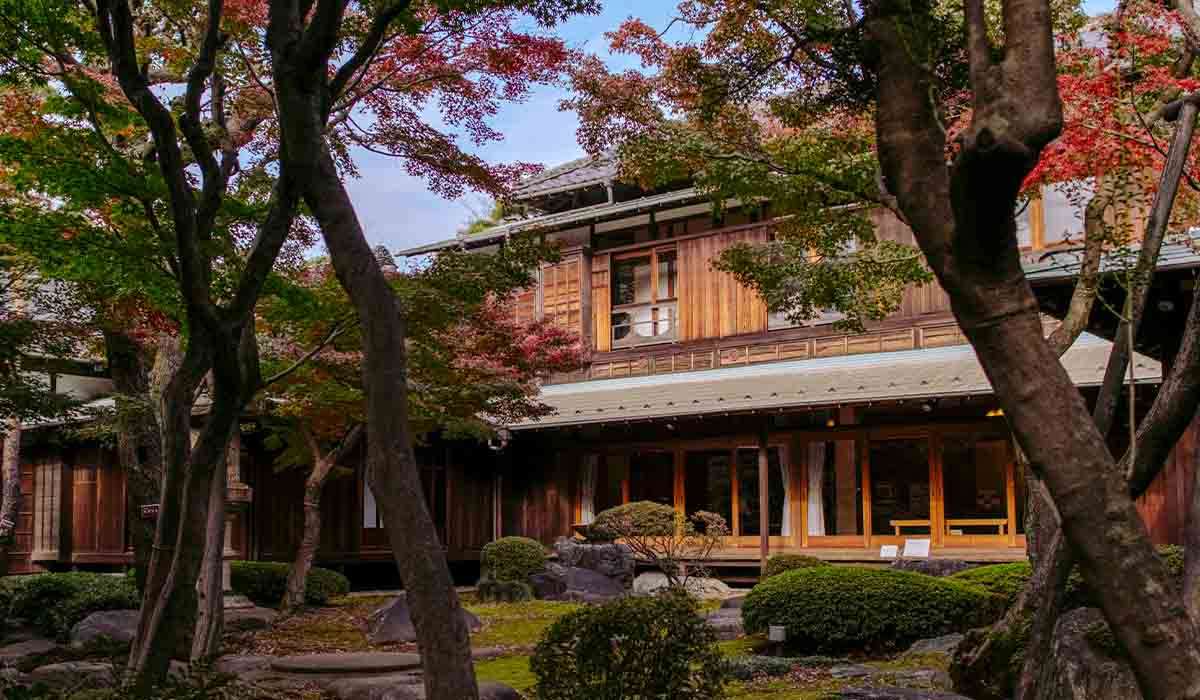
The 19 best things to do in Tokyo
Just a quick train ride from the neon lights and bustling streets of Shibuya lies a peaceful escape into Tokyo’s past: the Kyu Asakura House. This place is like a time capsule from 100 years ago, giving us a sneak peek into traditional Japanese life during the Taisho period. Built in 1919 for a politician named Torajiro Asakura, this house is now a spot where anyone can step back in time and see the beauty of old-school Japanese architecture and gardens.
First things first, the architecture here is mind-blowing. We’re talking about a classic Japanese residence, complete with sliding doors, tatami mats, and wooden carvings that look like they were made with the kind of detail and care we hardly ever see anymore. The house is designed to be in harmony with nature, which is a big deal in Japanese culture. Every room looks out onto the garden, blurring the lines between inside and outside space. It’s like nature is part of the living room!
Speaking of the garden, it’s not your average backyard. The garden at Kyu Asakura House is a masterpiece of Japanese landscape design, with stone paths winding through moss, trees, and shrubs. It’s super tranquil and the perfect place to chill and reflect or just take a break from the craziness of the city. In spring, the cherry blossoms add a pop of pink, making it even more picturesque.
Visiting the Kyu Asakura House is like stepping into a different world. It’s quiet, calm, and feels a million miles away from the modern Tokyo outside its walls. Walking through the house and garden, you can almost imagine what life was like for the Asakura family back in the day. It’s a unique chance to experience a piece of Japan’s history firsthand.
But here’s the thing: despite its beauty and historical significance, the Kyu Asakura House isn’t as famous as some of Tokyo’s other spots. That’s actually part of its charm. It’s like you’re in on a secret that most tourists don’t know about. You can explore the house and gardens without crowds, taking your time to soak in all the details and the peaceful atmosphere.
For anyone interested in Japanese history, architecture, or just looking for a quiet spot to unwind, the Kyu Asakura House is a must-visit. It shows a side of Tokyo that you won’t find in guidebooks, a glimpse into the city’s past that’s still alive in the middle of its modern hustle and bustle. So, make sure to add this hidden gem to your Tokyo itinerary. Trust me, it’s worth it.
Yayoi Kusama Museum: Dive Into a World of Dots and Infinity
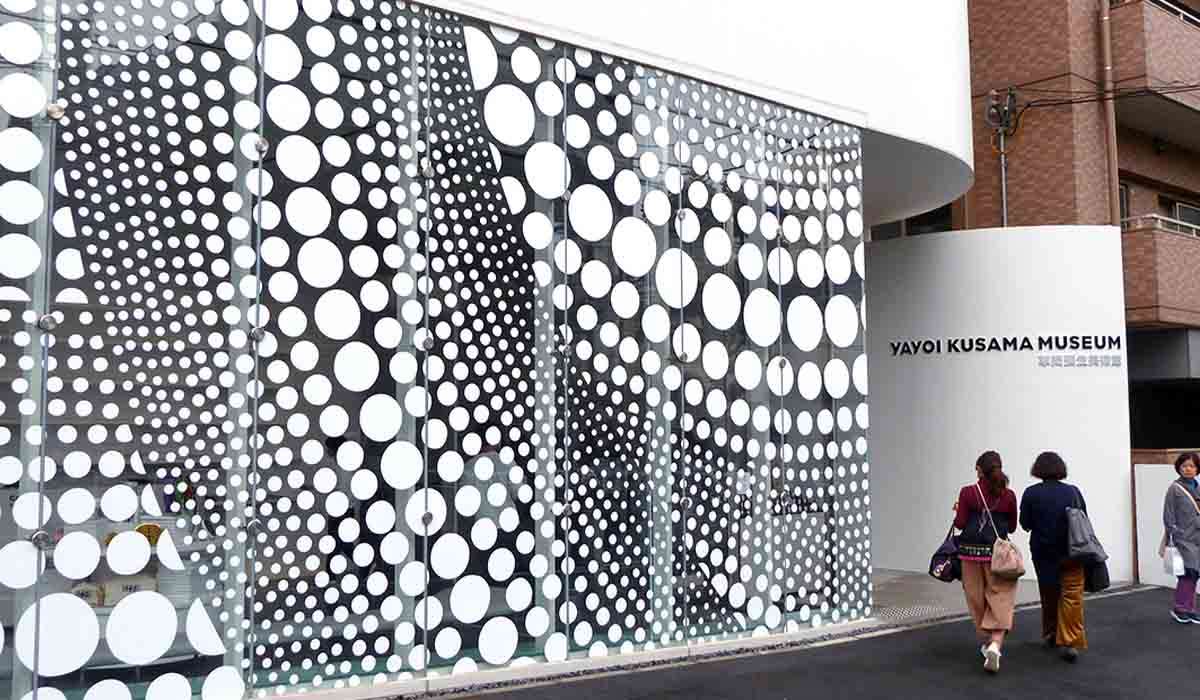
The 19 best things to do in Tokyo
Ever heard of Yayoi Kusama? She’s this super famous Japanese artist known for her love of dots and making art that feels like you’re stepping into another universe. In Tokyo, there’s this whole museum dedicated to her work, the Yayoi Kusama Museum. It’s like a dreamland for anyone who’s into art that’s a little out there and totally mesmerizing.
Kusama’s been around for a while, creating some of the coolest art you’ve ever seen. She’s big on using dots and nets, and she plays with space in ways that can make you feel like you’re part of the art itself. Her stuff ranges from sculptures and paintings to these amazing installations that can completely change the way you see the world around you.
The museum itself is this sleek, white building that stands out but also feels super inviting. Once you’re inside, it’s like entering Kusama’s mind. You’ll see her famous polka dots everywhere, on sculptures that seem to stretch on forever, and in paintings that pull you into her psychedelic world. But the real showstoppers are her Infinity Mirror Rooms. Imagine stepping into a room where mirrors and lights create this endless space that feels like floating in a galaxy of lights and colors. It’s an experience that’s hard to put into words—you just have to see it for yourself.
Visiting the Yayoi Kusama Museum isn’t just about looking at art; it’s about experiencing it. Kusama’s work makes you a part of it, letting you see the world through her eyes. And it’s not all about the visuals, either. Her art dives deep, exploring stuff like life, death, and what it means to be part of the universe. It’s pretty deep and totally fascinating.
The museum also switches things up with different exhibitions, so there’s always something new to see. They showcase Kusama’s work from over the years, giving you a glimpse into her evolution as an artist. From her early paintings to her latest installations, you get to see how her ideas and art have grown.
But heads up, getting into the Yayoi Kusama Museum takes a bit of planning. You can’t just show up; you need to book your tickets in advance. They limit the number of visitors to keep the experience chill and give everyone enough space to really get into the art. It’s worth the extra step, though. This place is one of those unique spots in Tokyo that offers an experience you won’t find anywhere else.
For art lovers, or anyone just looking to see something totally different, the Yayoi Kusama Museum is a must-visit. It’s not just about seeing art; it’s about stepping into a world where imagination knows no bounds. So, if you’re in Tokyo and ready for an adventure, make sure to add this museum to your list. It’s a trip into the infinite you won’t forget.
Unique Tokyo Experiences:The 19 Best Things To Do In Tokyo
Harmonica Yokocho: A Symphony of Sights, Sounds, and Flavors
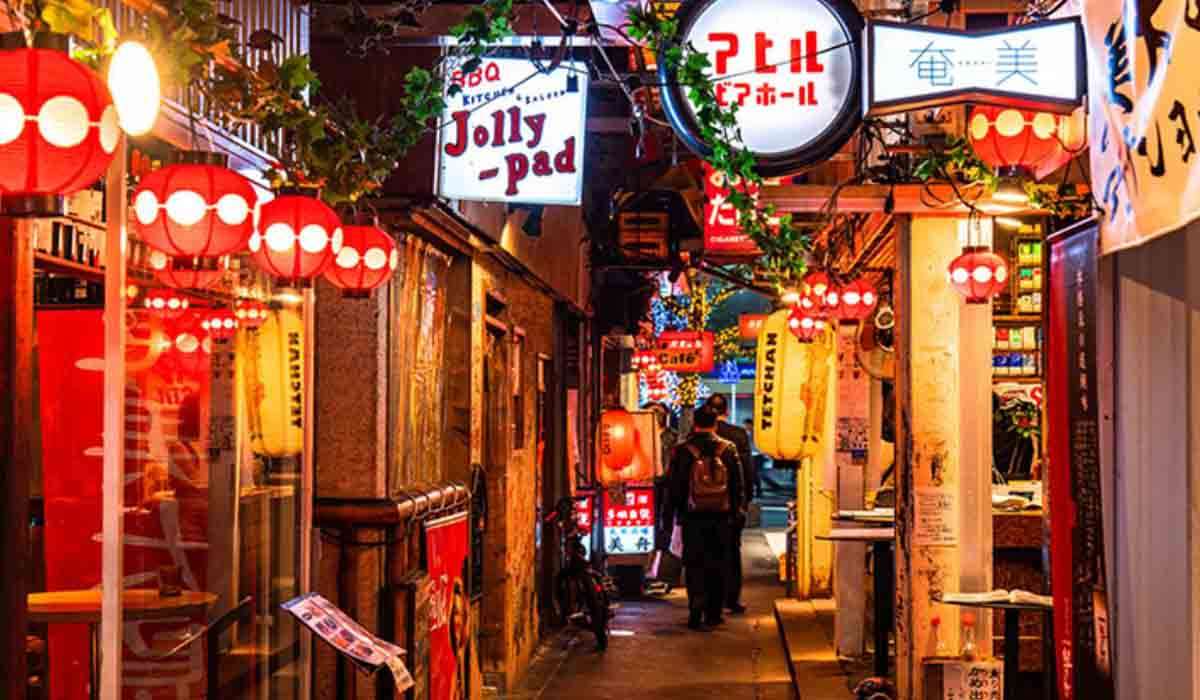
The 19 best things to do in Tokyo
Tucked away in the heart of Kichijoji, just a stone’s throw from the bustling train station, lies a hidden labyrinth of nostalgia and charm known as Harmonica Yokocho. It’s not your typical Tokyo landmark, but this network of narrow alleyways, brimming with tiny bars, eateries, and unique shops, offers a slice of Tokyo life that’s as authentic as it gets. Imagine stepping off the grid of modernity into a warren where every turn brings a new discovery, a place that pulses with the heartbeats of the past and present in perfect harmony.
The name “Harmonica Yokocho” itself evokes images of musical intricacy and compactness, aptly reflecting the close-knit and intertwined nature of this area. Originally a flea market post-World War II, these alleys have transformed over the decades into a vibrant hub of culinary delights and nightlife, yet they’ve retained an air of bygone days with their Showa-era aesthetics. Walking through Harmonica Yokocho is like flipping through the pages of Tokyo’s history, where every shop and stall has a story to tell.
As you meander through the alleys, the aroma of sizzling yakitori (grilled chicken skewers), the hearty laughter spilling out of tiny izakayas (Japanese pubs), and the kaleidoscopic displays of goods ranging from vintage clothing to artisanal crafts create a sensory overload. The area thrives in its compactness; each establishment is a tiny gem, often with just enough room for a handful of patrons, offering an intimate glimpse into the life of the locals. It’s this intimacy that makes Harmonica Yokocho a place where both visitors and regulars can rub elbows, share stories, and immerse themselves in the lively local vibe.
Foodies will find themselves spoiled for choice, with eateries serving everything from ramen and sushi to more eclectic offerings like retro Showa-era snacks. The beauty of dining here lies in the spontaneity of hopping from one spot to another, each with its own specialty and character. Whether it’s a standing bar serving craft beers or a cozy café tucked away behind a nondescript entrance, the culinary adventure in Harmonica Yokocho is unparalleled.
But Harmonica Yokocho isn’t just about the food. It’s a place where the past and present coexist, where you can find vintage toys and records alongside modern fashion and handmade jewelry. Shopping here is as much about the hunt and discovery as it is about the purchase itself. Each store is a treasure trove of unique finds, reflecting the individuality and passion of the shopkeepers.
Visiting Harmonica Yokocho is an experience that goes beyond the usual tourist paths. It’s an opportunity to dive deep into the rhythm of Tokyo’s daily life, to experience the city’s soul up close. As night falls and the lanterns cast a warm glow over the bustling alleys, you’ll find yourself lost in a world that feels timeless yet ephemeral, a fleeting melody in the symphony of Tokyo’s endless urban landscape.
For those looking to experience the authentic pulse of Tokyo, to see a side of the city that’s raw and real, Harmonica Yokocho is a must-visit. It’s a place where every visit tells a new story, a place that reminds us that the heart of Tokyo beats strongest in its hidden alleys and the lives that unfold within them.
Shibuya Crossing: The Pulse of Tokyo’s Organized Chaos

The 19 best things to do in Tokyo
Imagine standing at the edge of a sea of people, all waiting for a single signal to dive into the waves. This isn’t just any sea, though; it’s Shibuya Crossing, often hailed as the world’s busiest intersection. Right in the heart of Tokyo, Shibuya Crossing is more than just a spot to cross the street; it’s a spectacle, a phenomenon that captures the essence of the city’s frenetic energy and its uncanny ability to organize chaos into a dance.
As the lights turn red at every corner, the vehicles halt, creating a brief moment of anticipation. Then, as if orchestrated by an unseen conductor, the lights change, and pedestrians flood into the intersection from all directions. They weave through each other with a precision that’s almost balletic, a testament to the Japanese knack for order and respect for social harmony. This moment, repeated every few minutes, is a living, breathing symbol of Tokyo itself—a city that thrives amidst the rush, yet never loses its grace.
For visitors looking to witness this mesmerizing urban ballet, there are several prime spots to take in the view. One of the most popular is the Starbucks located on the second floor of the Q-Front building. With floor-to-ceiling windows overlooking the crossing, it offers a cozy vantage point from which to observe the ebb and flow of the crowd below. Just be prepared to compete for space with both tourists and locals alike, as this spot is no hidden gem.
Another fantastic viewpoint is the Shibuya Sky, an observation area atop the Shibuya Scramble Square building. Offering a more bird’s-eye perspective, Shibuya Sky allows you to see the crossing in its entirety, set against the backdrop of Tokyo’s sprawling cityscape. From this height, the people crossing below resemble colorful dots moving in harmony, a sight that adds a whole new dimension to the experience.
For those who prefer to be in the thick of it, experiencing Shibuya Crossing from street level is a must. Feel the energy and the pulse of the city as you join the throng, navigating your way across with hundreds of others. It’s a unique opportunity to become part of the very spectacle you came to see, a moment of connection with the city and its people that’s both exhilarating and humbling.
Shibuya Crossing isn’t just a tourist attraction; it’s a snapshot of Tokyo life, a place where diverse paths intersect, both literally and metaphorically. It’s where young fashionistas rub shoulders with salarymen, where tourists and locals alike pause to take selfies, and where every walk of life converges in a shared human experience.
To truly appreciate the organized chaos of Shibuya Crossing, take the time to see it from multiple angles. Each viewpoint offers a different insight into this iconic Tokyo phenomenon, a spectacle that, much like the city itself, blends tradition with ceaseless innovation. Shibuya Crossing is more than just a place to cross the street; it’s a must-experience urban adventure that epitomizes the dynamic spirit of Tokyo.
Sumo at Ryogoku Kokugikan: A Deep Dive into Japan’s Grand Sport
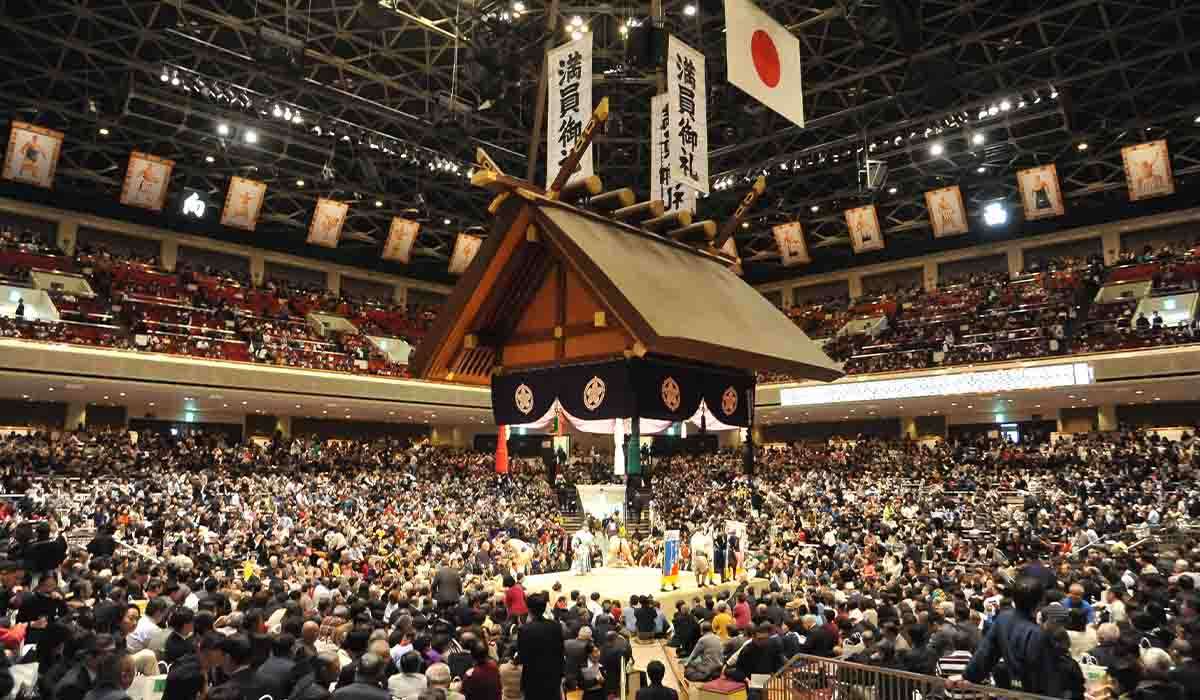
The 19 best things to do in Tokyo
Sumo wrestling isn’t just a sport in Japan; it’s a living tradition, a spectacle of strength, ceremony, and cultural significance that dates back over 1,500 years. And there’s no better place to experience the grandeur of sumo than at Ryogoku Kokugikan, Tokyo’s sumo wrestling heart. Situated in the sumo district of Ryogoku, this arena is where you can catch the intense action and immerse yourself in a cultural experience like no other.
Ryogoku Kokugikan can hold around 11,000 spectators and hosts three of the six annual Grand Sumo Tournaments (Honbasho) in January, May, and September. Each tournament lasts 15 days, culminating in a final that sees the Yokozuna (grand champion) battle it out for the top prize. But sumo at Ryogoku Kokugikan is more than just the matches; it’s about the rituals, the history, and the atmosphere that fills the air.
The Sumo Experience
Attending a sumo match is a full-day affair. The day starts early with matches featuring lower-ranked wrestlers, but as the afternoon progresses, the arena fills up, and the anticipation builds until the top-division matches begin. It’s a crescendo of excitement, with each match bringing the audience closer to the edge of their seats.
The matches themselves are brief, often lasting only a few seconds to a minute, but they are intense and filled with power and skill. Before the actual fight begins, there’s a series of rituals that the wrestlers perform, including the Shiko (leg-stomping) to drive away evil spirits, and the ceremonial throwing of salt to purify the ring. These rituals are as much a part of the sumo experience as the matches, offering a glimpse into the sport’s rich history and religious origins.
Cultural Significance
Sumo is deeply intertwined with Shinto, Japan’s indigenous faith. Many rituals associated with the sport have Shinto origins, making attending a match a spiritual experience as well. The dohyo (sumo ring) is considered sacred ground, and the sport itself is seen as a way to entertain the gods. This spiritual aspect adds a layer of depth to the matches and the atmosphere in the arena.
Tips for Visiting
- Tickets: It’s advisable to purchase your tickets well in advance, especially for seats closer to the ring, which offer the most immersive experience. There are various types of seats, from ringside cushions (Tamari-seki) to box seats (Masu-seki) and balcony seats (Jiyu-seki). Each offers a different perspective of the matches.
- Etiquette: Sumo has its own set of customs and etiquette. For example, it’s considered rude to stand up during a match, blocking the view of those behind you. Clapping at the end of a match is common, but cheering during the rituals is not.
- Food and Souvenirs: Ryogoku Kokugikan has a variety of food stalls and souvenir shops. Trying Chanko-nabe, the traditional sumo stew, is a must. It’s a hearty and delicious way to connect further with the sumo culture.
- Sumo Museum: If you arrive early, visit the Sumo Museum located within the Kokugikan. It’s a great way to learn about the history of sumo, see memorabilia, and deepen your understanding of this ancient sport.
Visiting Ryogoku Kokugikan for a sumo match is more than just watching a sport; it’s an immersive cultural experience. It offers a unique window into the soul of Japan, blending athleticism, tradition, and spirituality in a spectacle that is both thrilling and deeply moving. Whether you’re a sports fan or simply curious about Japanese culture, experiencing sumo at Ryogoku Kokugikan is an unforgettable highlight of any trip to Tokyo.
teamLab Borderless: A Journey Through Digital Artscapes
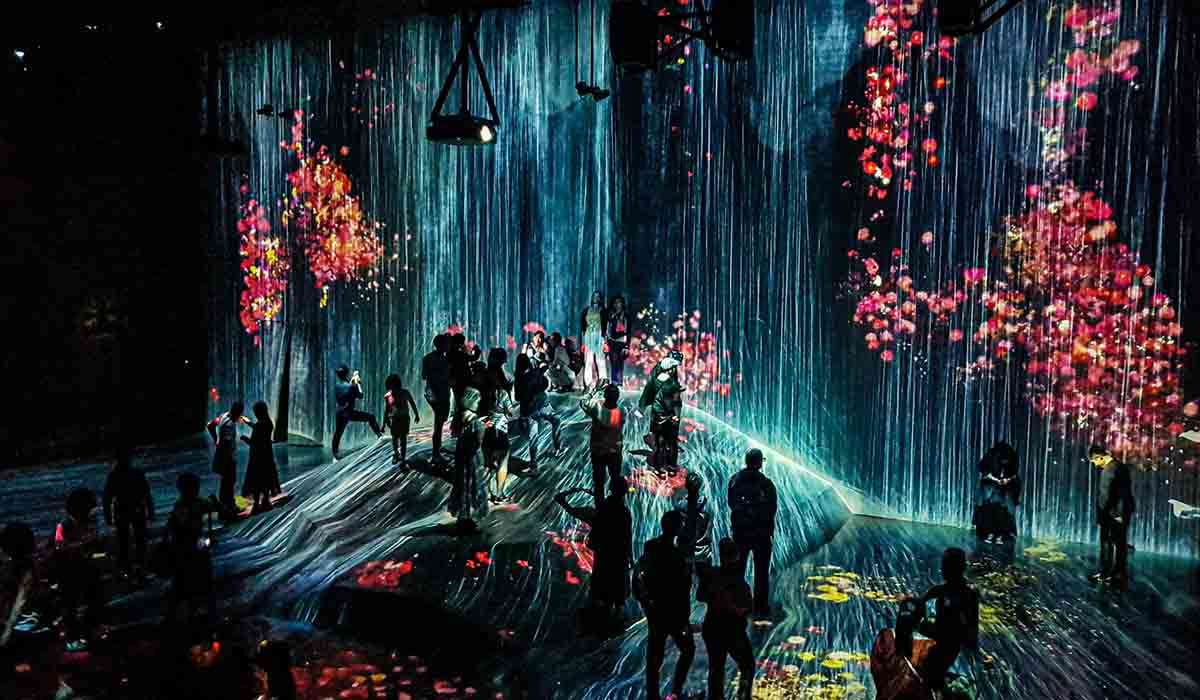
The 19 best things to do in Tokyo
teamLab Borderless, situated in the futuristic Odaiba district of Tokyo, is not just an art museum; it’s a boundary-defying, immersive world where art and technology fuse in spectacular fashion. This innovative gallery has transformed the traditional art viewing experience into an interactive journey, inviting visitors to step into a realm where digital art installations come alive, responding to and interacting with their presence.
The Concept of Borderless
At its core, teamLab Borderless challenges the notion of fixed boundaries. The artworks are not confined to frames or limited by space; instead, they flow out of rooms, communicate with other works, blend into one another, and even change in response to the presence of visitors. This fluidity creates a world where the art is limitless, allowing visitors to explore a space that feels both infinite and intimate.
Immersive Digital Installations
teamLab Borderless is home to several zones, each offering unique experiences that captivate the senses. One of the highlights is the “Forest of Resonating Lamps,” where countless hanging lamps change colors as they respond to human touch, creating a dazzling sea of light that reflects the collective behavior of the visitors. Another must-see is the “Crystal World,” where countless LED lights create a space that feels both vast and ethereal, transforming as visitors move through it.
The installations utilize advanced technology, from projection mapping and sensors to sound and light effects, to create environments that are constantly evolving. The art here is not static; it’s born from the interaction between the artwork, the space, and the viewer, making each visit a unique experience.
Engaging with Art in New Ways
teamLab Borderless invites visitors to become part of the art, blurring the lines between the observer and the observed. Here, children and adults alike can wander through rice fields that sway in digital wind, navigate through a room of hopping koi fish that turn into flowers when touched, or leave their own digital footprints in a universe of stars. The museum’s interactive nature encourages exploration and play, challenging perceptions and engaging visitors in a dialogue with the art.
A Fusion of Art and Technology
The creators behind teamLab Borderless, teamLab, are a collective of artists, engineers, CG animators, and more, who seek to explore new relationships between humans and the world through art. Their work at Borderless serves as a testament to the potential of technology to expand the boundaries of artistic expression, creating spaces where art can transcend physical and conceptual limitations.
Planning Your Visit
teamLab Borderless is immensely popular, and visitors are advised to purchase tickets in advance to secure entry. Once inside, you can spend hours exploring the myriad of installations, each crafted to offer a glimpse into a world where digital and physical realms converge seamlessly. The museum also features a tea house where flowers bloom in your tea, adding a traditional yet futuristic twist to the experience.
Nature and Relaxation:The 19 Best Things To Do In Tokyo
Shinjuku Gyoen National Garden: An Oasis of Calm in Tokyo’s Heart
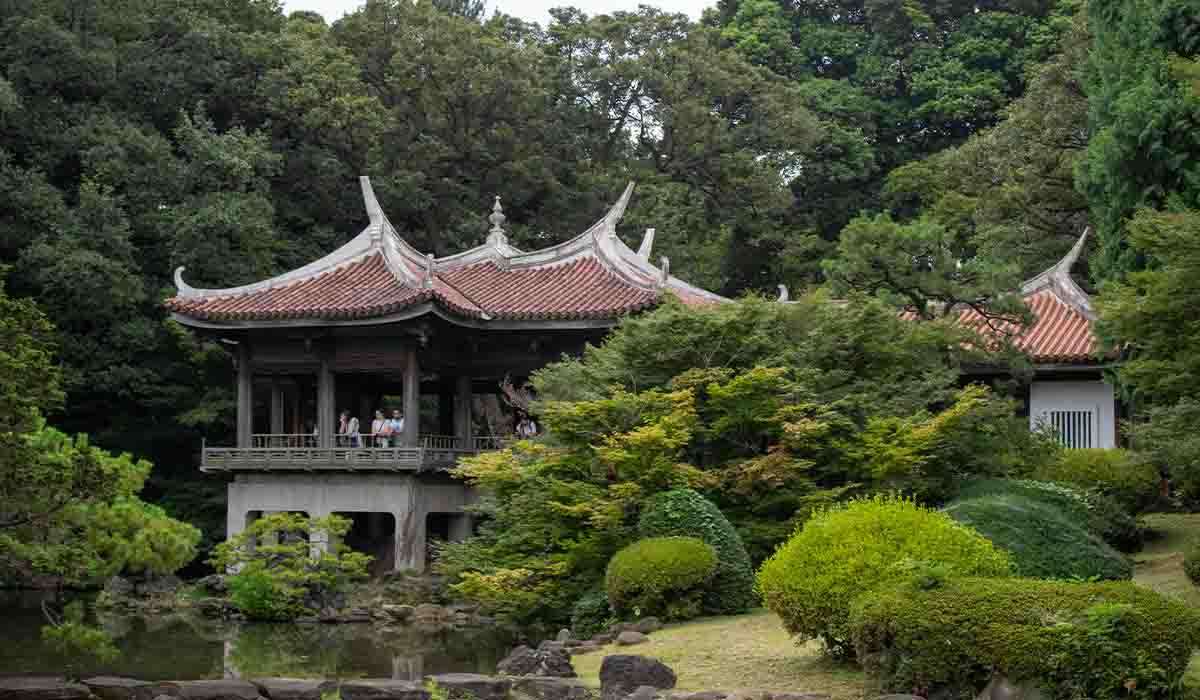
The 19 best things to do in Tokyo
Nestled amidst the skyscrapers and the never-ending hustle of one of the world’s most vibrant cities, Shinjuku Gyoen National Garden stands as a testament to the beauty of nature and the art of landscape design. This sprawling haven offers a much-needed respite from the fast-paced life of Tokyo, inviting locals and tourists alike to pause, breathe, and immerse themselves in its tranquil beauty.
Shinjuku Gyoen seamlessly blends three distinct garden styles: the traditional Japanese landscape garden, the formal symmetry of French garden design, and the expansive lawns of an English landscape garden. This unique combination creates a space that feels both intimately familiar and intriguingly foreign, providing a variety of experiences within its walls.
The Japanese Garden
Entering the Japanese garden area of Shinjuku Gyoen, visitors are greeted by meticulously maintained landscapes that reflect the changing seasons. Koi ponds, stone lanterns, and gracefully arched bridges invite contemplation, while the carefully pruned trees and shrubs frame views that seem to be composed like living paintings. The Japanese garden is a showcase of the country’s rich gardening tradition, emphasizing harmony between man and nature. In spring, cherry blossoms transform this part of the garden into a breathtaking spectacle of fleeting beauty, embodying the Japanese concept of mono no aware—the poignant awareness of the transience of things.
The French Garden
Contrasting the introspective beauty of the Japanese garden, the French garden at Shinjuku Gyoen is all about grandeur and symmetry. Neatly trimmed hedges and geometrically arranged flower beds speak of a different aesthetic ethos, one that seeks to demonstrate control over nature rather than harmony with it. This area of the garden is a perfect spot for those who appreciate the meticulous art of formal garden design, offering a glimpse into the European gardening tradition that values order, color, and perspective.
The English Landscape Garden
The English garden area provides a stark contrast to the meticulousness of the Japanese and French gardens. Here, the emphasis is on creating a landscape that mimics natural scenery, with rolling lawns, groves of trees, and meandering pathways that invite exploration. This part of Shinjuku Gyoen feels like a countryside escape, offering open spaces that are perfect for picnicking, leisurely strolls, or simply lying on the grass and watching the clouds drift by. The English garden’s informal and naturalistic design provides a sense of freedom and relaxation, a place where one can momentarily forget they are in the middle of Tokyo.
A Sanctuary in the City
Shinjuku Gyoen National Garden is more than just a park; it’s a cultural and historical landmark that offers a window into the soul of Japanese gardening and landscape architecture. Its ability to blend different garden styles into a cohesive whole is a metaphor for Tokyo itself—a city where tradition and modernity, nature and urban life, coexist in surprising harmony.
Visiting Shinjuku Gyoen provides a unique opportunity to experience the tranquility and beauty of nature without leaving the city. It’s a place where one can find solace amidst the chaos, reconnect with the natural world, and perhaps find a moment of zen in the heart of Tokyo. Whether you’re a gardening enthusiast, a nature lover, or just someone in search of a peaceful retreat, Shinjuku Gyoen National Garden is a must-visit oasis of calm in Tokyo’s bustling urban landscape.
Yoyogi Park: Tokyo’s Vibrant Urban Playground
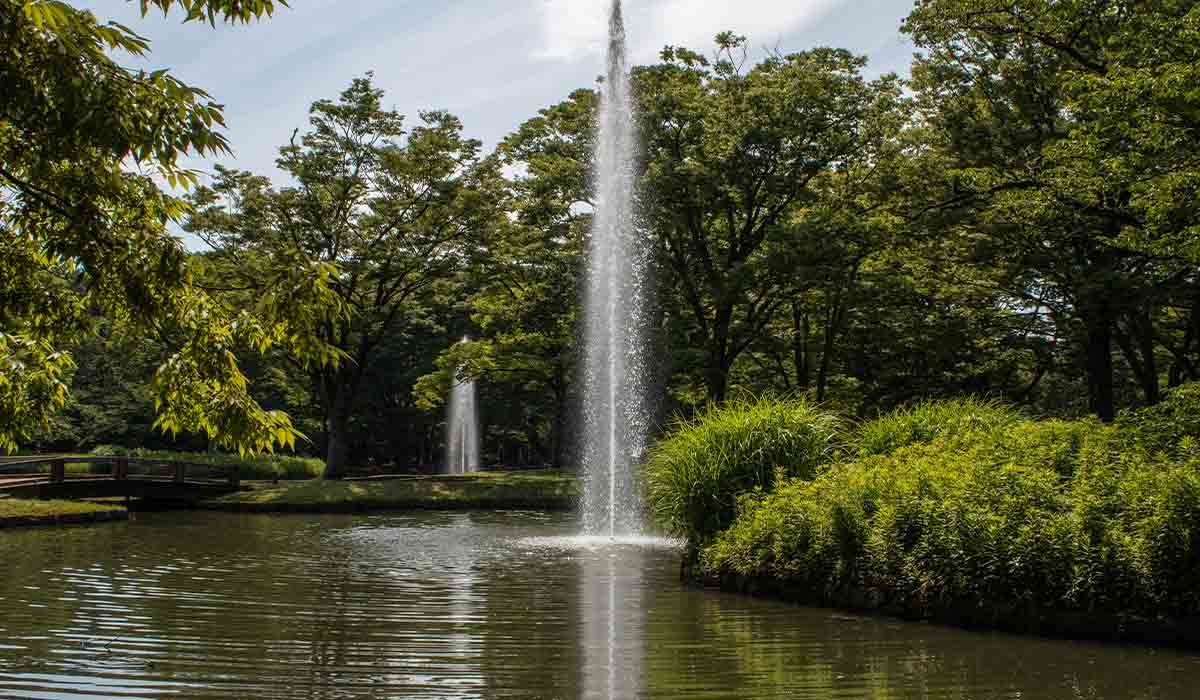
The 19 best things to do in Tokyo
In the sprawling metropolis of Tokyo, where the urban landscape stretches as far as the eye can see, Yoyogi Park emerges as a verdant oasis offering a breath of fresh air and a burst of lively energy. As one of Tokyo’s largest and most popular parks, Yoyogi Park is a dynamic space that caters to everyone—from joggers and picnickers to musicians and cosplayers. Its expansive grounds and diverse environments make it a perfect spot for a wide range of recreational activities and for soaking up the city’s vibrant atmosphere.
A Hub of Activity
Yoyogi Park’s wide, tree-lined paths and spacious lawns are a haven for fitness enthusiasts and families alike. On any given day, you can see people jogging, practicing yoga, or engaging in team sports like frisbee or soccer. The park’s cycling path is a hit among cyclists, while dog owners find its open spaces ideal for walking their pets. Additionally, the park features dedicated areas for more organized sports, providing a communal space for people to stay active and healthy.
Cultural and Social Gatherings
What sets Yoyogi Park apart is not just its greenery but its role as a cultural and social hub. On weekends, the park transforms into a lively venue for various events and performances. Street performers, dancers, and musicians take to the outdoor stage, creating a festive atmosphere that captivates both locals and tourists. The park’s spacious areas also serve as meeting points for diverse groups, from rockabilly dance troupes to martial arts clubs, each adding their unique flair to the park’s vibrant culture.
Relaxation and Leisure
For those looking to unwind, Yoyogi Park offers plenty of quiet corners and scenic spots perfect for relaxation. The park’s large pond, surrounded by lush trees and blooming flowers, is a tranquil spot for contemplation or a leisurely stroll. Picnicking is another popular activity, with families and friends gathering on the lawns to enjoy a meal under the sky. The changing seasons bring their own charm to the park, from cherry blossoms in spring to ginkgo leaves in autumn, providing a beautiful backdrop for leisurely days spent outdoors.
Events and Festivals
Yoyogi Park is also known for hosting some of Tokyo’s most vibrant festivals and events, particularly in its event plaza near the Harajuku entrance. Throughout the year, the park becomes the venue for numerous cultural festivals, including the Yoyogi Park Earth Day Market, the Tokyo Rainbow Pride festival, and various international food and culture festivals. These events are a testament to Tokyo’s multicultural spirit, offering a taste of global traditions and cuisines right in the heart of the city.
A Microcosm of Tokyo’s Energy
Yoyogi Park encapsulates the energy and diversity of Tokyo itself. It’s a place where the city’s residents come to exercise, relax, socialize, and express themselves. The park’s lively atmosphere and myriad activities reflect the dynamic pulse of Tokyo, making it an essential visit for anyone looking to experience the city’s vibrant urban culture. Whether you’re seeking recreation, relaxation, or just a place to observe the fascinating tapestry of Tokyo life, Yoyogi Park delivers with its endless charm and vitality.
Koganeyu: Where Tradition Meets Modernity in Tokyo’s Bathing Culture
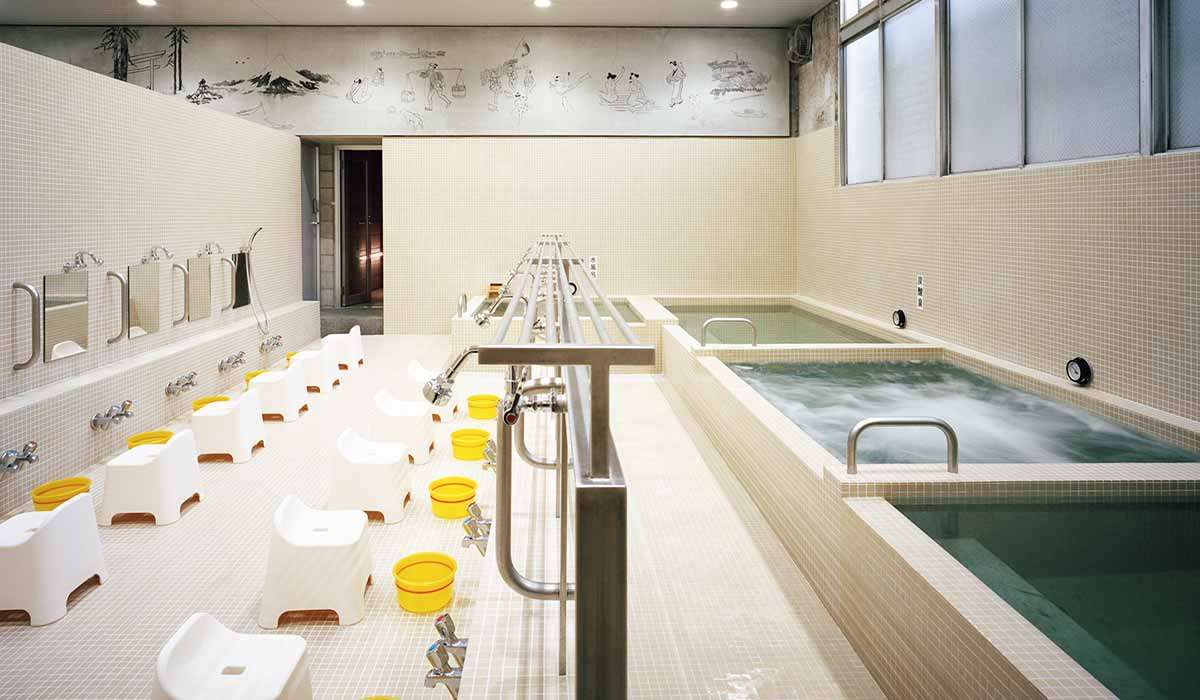
The 19 best things to do in Tokyo
In the heart of Tokyo, a city that effortlessly blends the ancient with the ultramodern, Koganeyu stands as a testament to this harmonious coexistence, especially in the realm of wellness and bathing culture. Sento, the traditional Japanese communal bathhouses, have been a cornerstone of Japanese daily life for centuries, offering a place not just for physical cleansing but for relaxation and social interaction. Koganeyu takes this traditional concept and elevates it with a touch of modern luxury and comfort, providing a unique experience that pays homage to the past while embracing the present.
Understanding Sento
To truly appreciate what Koganeyu offers, it’s essential to delve into the concept of sento. Historically, these bathhouses served as public bathing facilities in times when private baths were not commonplace in Japanese homes. More than just a place to wash away the day’s grime, sento were (and still are) community hubs where people of all ages and walks of life come together, setting aside their societal roles and differences in the spirit of equality and relaxation. The ritual of bathing in sento is deeply ingrained in Japanese culture, promoting both cleanliness and social bonds.
Koganeyu: A Modern Take on a Time-Honored Tradition
Koganeyu, an 89-year-old establishment, has reinvented the sento experience, integrating traditional bathing rituals with contemporary amenities and design. Upon entering Koganeyu, visitors are greeted with the soothing ambiance of a modern wellness retreat, yet the essence of the classic sento atmosphere remains intact. The facility boasts several baths, including hot, cold, and bubble baths, alongside a sauna, each designed to cater to the diverse preferences of today’s bathers while encouraging the communal spirit of sento.
One of the standout features of Koganeyu is its outdoor bath (rotenburo), which allows bathers to immerse themselves in hot, soothing waters while being surrounded by nature, a rare luxury in the urban landscape of Tokyo. This combination of natural beauty and traditional bathing offers a serene escape from the bustling city life, providing a moment of tranquility and a connection to nature that is often missed in daily urban living.
Honoring tradition while embracing innovation.
Koganeyu doesn’t stop at offering a contemporary bathing experience; it also incorporates modern wellness trends into its offerings. The sento includes a relaxation area where visitors can unwind after their bath, enjoying refreshments or participating in wellness activities that complement the bathing experience. This approach reflects a broader trend in Japanese bathing culture, where health and relaxation go hand in hand, and the bathhouse serves as a comprehensive wellness center.
Moreover, Koganeyu has embraced the digital age, allowing visitors to learn about the sento culture through interactive displays and digital guides, making the traditional Japanese bathing culture accessible and engaging for both locals and international visitors.
A Bridge Between Worlds
Koganeyu represents a harmonious blend of tradition and modernity, offering a unique window into Japan’s rich bathing culture while providing a contemporary wellness experience. It stands as a testament to the adaptability and enduring appeal of the sento, proving that even in a rapidly changing world, there is still a place for the rituals and practices that have defined Japanese life for centuries. For anyone looking to explore the depths of Tokyo’s cultural heritage or simply seeking a moment of relaxation, Koganeyu offers a warm welcome and a soothing escape, embodying the very essence of what makes the Japanese bathing experience so special.
Shopping and Markets:The 19 Best Things To Do In Tokyo
Kappabashi Street: Tokyo’s Culinary Treasure Trove
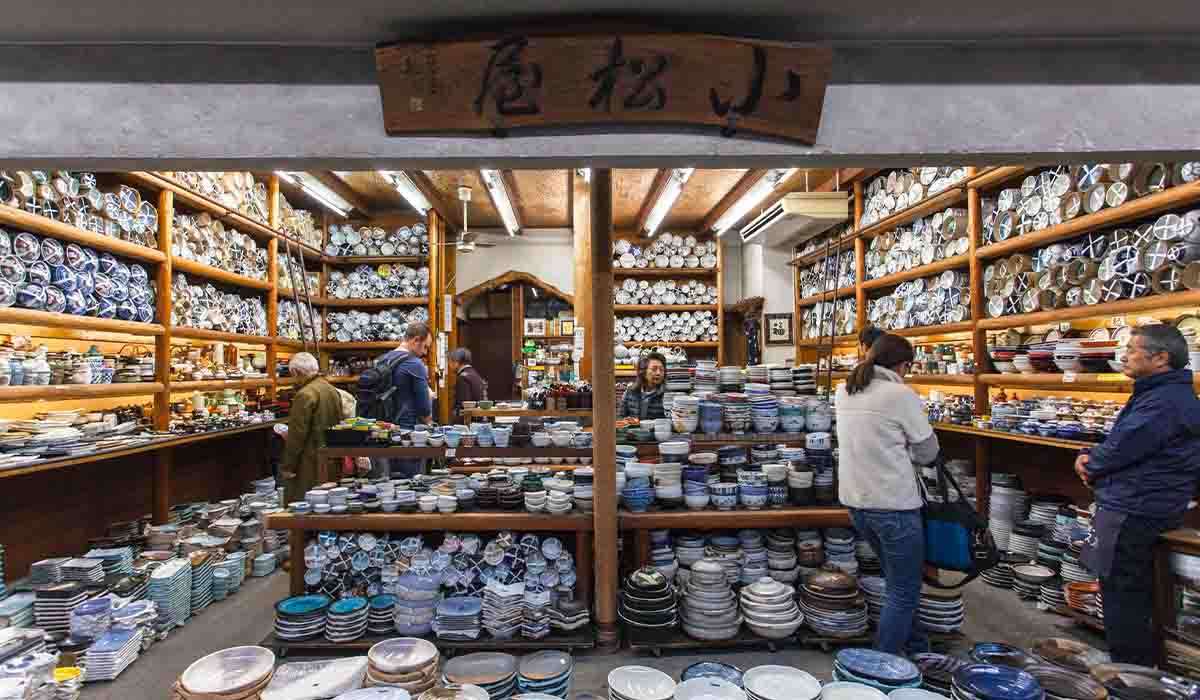
The 19 best things to do in Tokyo
Nestled between the historic neighborhoods of Ueno and Asakusa, Kappabashi Street, or “Kitchen Town” as it’s affectionately known, serves as the beating heart of Tokyo’s culinary supply scene. This unique district, stretching over 800 meters, is a paradise for chefs, restaurateurs, and food enthusiasts alike, offering everything from high-quality kitchen knives and restaurant-grade equipment to the intricately detailed plastic food models that have become synonymous with Japanese dining culture.
The Culinary Aladdin’s Cave
Walking down Kappabashi Street is like stepping into an Aladdin’s cave of culinary treasures. The street is lined with over 170 shops, each specializing in a different aspect of kitchen and restaurant supplies. Whether you’re a professional chef looking for the perfect hand-forged knife, a cafe owner in search of unique tableware, or simply a cooking enthusiast eager to explore Japanese cookware, Kappabashi has something for everyone.
A Cut Above: The Craftsmanship of Kappabashi
One of the street’s standout attractions is its selection of Japanese knives, revered by chefs worldwide for their precision, durability, and artistry. These knives, ranging from versatile santokus to specialized sushi blades, are crafted using techniques passed down through generations, making a visit to Kappabashi a pilgrimage for those in the culinary world. Beyond knives, the street offers an array of cookware, from traditional cast iron pans to modern silicone baking molds, showcasing the blend of tradition and innovation that characterizes Japanese culinary arts.
More Than Just Utensils
Kappabashi’s appeal extends beyond just kitchenware. The district is famous for its plastic food samples, known as “sampuru,” which are displayed in restaurant windows across Japan to entice customers. These incredibly lifelike models, made from plastic and wax, range from bowls of ramen and plates of sushi to Western dishes like spaghetti and steak. For tourists, these food replicas make for unique souvenirs, offering a quirky and lasting memory of Japan’s food culture.
A Feast for the Senses
Visiting Kappabashi Street is a sensory experience. The sounds of craftsmen at work, the sight of beautifully displayed tableware and lacquerware, and the tactile pleasure of handling expertly made cookware combine to create an atmosphere that’s both inspiring and overwhelming. It’s a place where one can spend hours exploring, discovering the tools and decorations that elevate food from mere sustenance to an art form.
The Cultural Fabric of Tokyo
Kappabashi Street is more than just a shopping destination; it’s a vital part of Tokyo’s cultural fabric. The district’s focus on quality and craftsmanship reflects the Japanese ethos of respect for food and the culinary arts. For visitors, a trip to Kappabashi offers insight into the importance of cuisine in Japanese life and the meticulous care that goes into every aspect of dining, from preparation to presentation.
Nakano Broadway: The Heartbeat of Tokyo’s Otaku Culture
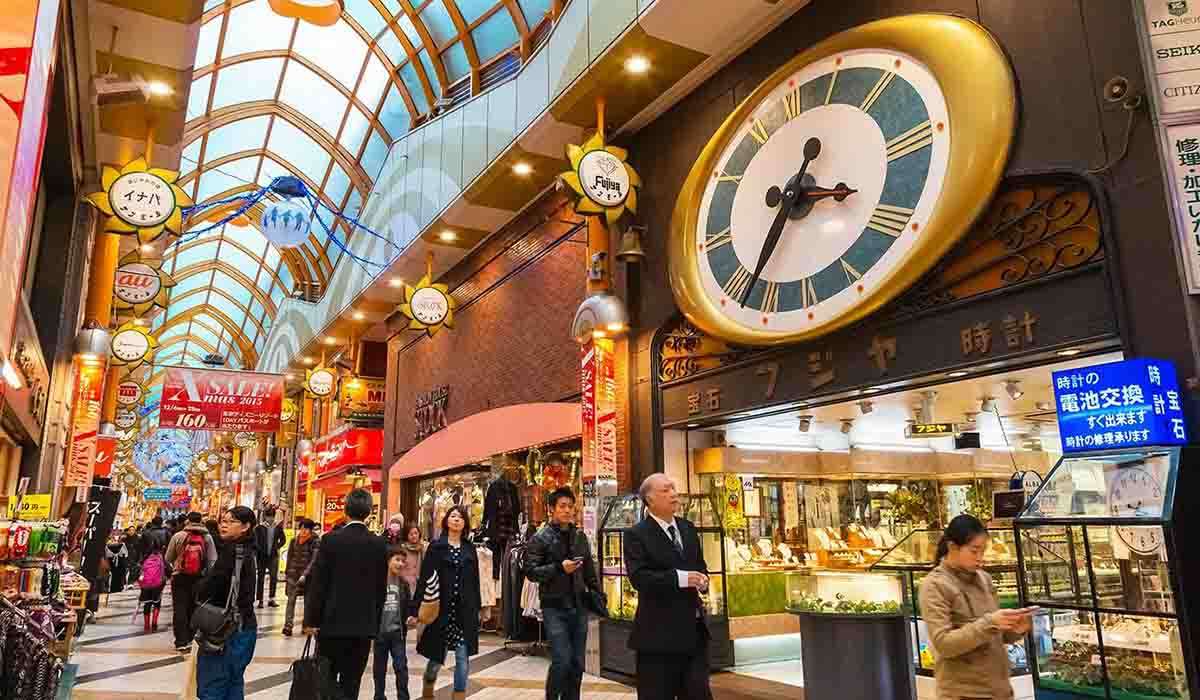
The 19 best things to do in Tokyo
Nestled in the vibrant neighborhood of Nakano, a short train ride from the bustling center of Shinjuku, lies Nakano Broadway, a shopping complex that has become a sanctuary for fans of anime, manga, and all facets of otaku culture. This multi-story mall, seemingly unassuming from the outside, opens up into a labyrinth of shops that cater to every imaginable niche within the otaku universe.
A Treasure Trove for Collectors and Fans
Nakano Broadway is not your average shopping mall; it’s a haven for collectors and enthusiasts, offering a dizzying array of goods that span the breadth of Japanese pop culture. From vintage manga and classic anime DVDs to rare collectible figures and retro video games, Nakano Broadway’s shops are stocked with items that can’t be found anywhere else in the world. Each floor of the complex presents a new realm of exploration, with stores specializing in everything from cosplay outfits and accessories to original artwork and fan-made merchandise.
Mandarake: The Crown Jewel
The crown jewel of Nakano Broadway is undoubtedly Mandarake, a chain of stores known for its extensive collection of manga, anime, and collectibles. Occupying multiple floors within the complex, Mandarake caters to serious collectors with its vast selection of rare and out-of-print items. Here, you can find first-edition manga volumes, signed memorabilia, and limited-edition figures that are the stuff of legends among fans. The atmosphere in Mandarake is one of reverence, as if each item on the shelf holds a piece of otaku history.
Beyond Collectibles: A Cultural Experience
But Nakano Broadway offers more than just merchandise; it’s a cultural experience that gives insight into the depth and diversity of otaku culture. The mall is a microcosm of the community, with shops dedicated to subcultures that might surprise even seasoned fans. From idol goods and military memorabilia to vintage toys and gothic fashion, Nakano Broadway showcases the many layers of fandom that exist within Japan.
Food and Entertainment
Amidst the shopping, Nakano Broadway also offers a variety of food options and entertainment venues. Themed cafés and casual eateries provide a place to rest and recharge, serving up both traditional Japanese snacks and dishes inspired by popular anime and manga. Additionally, the complex hosts events and exhibitions that celebrate otaku culture, drawing fans from across Japan and around the world.
A Must-Visit for Pop Culture Enthusiasts
For visitors to Tokyo, Nakano Broadway is a must-visit destination that offers a deep dive into otaku culture. It’s a place where you can spend hours exploring, discovering new interests, and meeting fellow fans. The complex’s welcoming atmosphere makes it accessible to newcomers and seasoned otaku alike, ensuring that everyone leaves with a deeper appreciation for the creativity and passion that fuel Japanese pop culture.
Food and Drink : The 19 Best Things To Do In Tokyo
Tokyo Skytree: Dining Among the Clouds
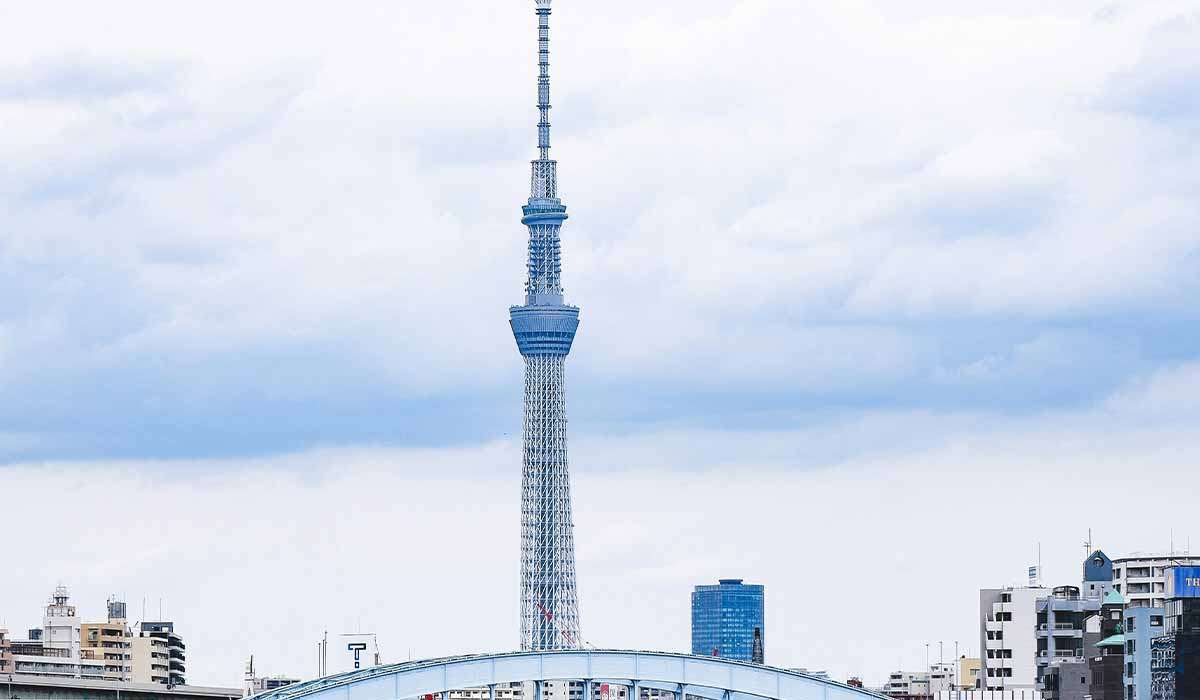
The 19 best things to do in Tokyo
Tokyo Skytree, not only celebrated as the world’s tallest tower but also as a marvel of modern engineering and design, offers more than just breathtaking views over the sprawling metropolis of Tokyo. Nestled within this architectural giant are dining experiences that promise to elevate your visit—quite literally—to new heights. As you ascend the tower, you’ll find a variety of dining options that cater to every palate, all the while surrounded by panoramic views that make every meal unforgettable.
Sky Restaurant 634 (Musashi)
For those seeking a luxurious dining experience, Sky Restaurant 634 (Musashi) offers French-Japanese fusion cuisine prepared with the finest ingredients. The restaurant’s name, “634,” derives from the tower’s height in meters, symbolizing its unique connection to the Skytree. As you indulge in exquisitely crafted dishes, the floor-to-ceiling windows present an ever-changing backdrop of Tokyo, from the bustling streets below to the distant mountains on the horizon. It’s a perfect setting for special occasions or simply to enjoy a meal above the clouds.
Skytree Café
For a more casual dining experience, the Skytree Café offers a variety of snacks, light meals, and beverages. It’s an ideal spot to take a break and soak in the views without stepping away from the breathtaking scenery. Whether you’re craving a sweet treat, a cup of coffee, or a refreshing drink, the café provides a comfortable space to relax and enjoy the tower’s serene atmosphere.
Sorakara Point Café
Perched at one of the highest points accessible to visitors, the Sorakara Point Café is where you can enjoy a drink amidst the stars. The café’s unique location makes it a magical spot, especially during the evening when the city lights twinkle like a carpet of stars below. Offering a selection of themed drinks and snacks, it’s a must-visit for those wanting to experience the tower’s celestial ambiance.
The Solamachi Dining Complex
At the base of Tokyo Skytree, the Solamachi complex offers an extensive array of dining options that span the globe. From traditional Japanese restaurants serving sushi and ramen to international cuisines, there’s something to satisfy every craving. The Solamachi complex is not just a place to eat; it’s a culinary journey that complements your Skytree adventure.
Tips for Dining at Tokyo Skytree
- Reservations are Recommended: For restaurants like Sky Restaurant 634, it’s wise to book in advance, especially if you’re planning to visit during peak times or if you’re in a large group.
- Check for Special Packages: Some dining experiences may come with Skytree admission tickets or offer packages that include special menus and reserved seating with the best views.
- Explore the Options: Whether you’re dining at the top of the tower or exploring the Solamachi complex, take the time to explore the variety of dining options available. Each restaurant and café offers its own unique view of Tokyo, making every dining experience distinct.
Dining at Tokyo Skytree goes beyond mere eating; it’s an integral part of the Skytree experience. With each restaurant offering its own unique blend of culinary delights and stunning vistas, a visit to the Skytree promises to be as much a feast for the taste buds as it is a feast for the eyes. Whether you’re celebrating a special occasion or simply seeking a memorable meal, the dining options at Tokyo Skytree offer something truly special for everyone.
Sakurai Tea Experience: A Journey Through Japanese Tea Culture
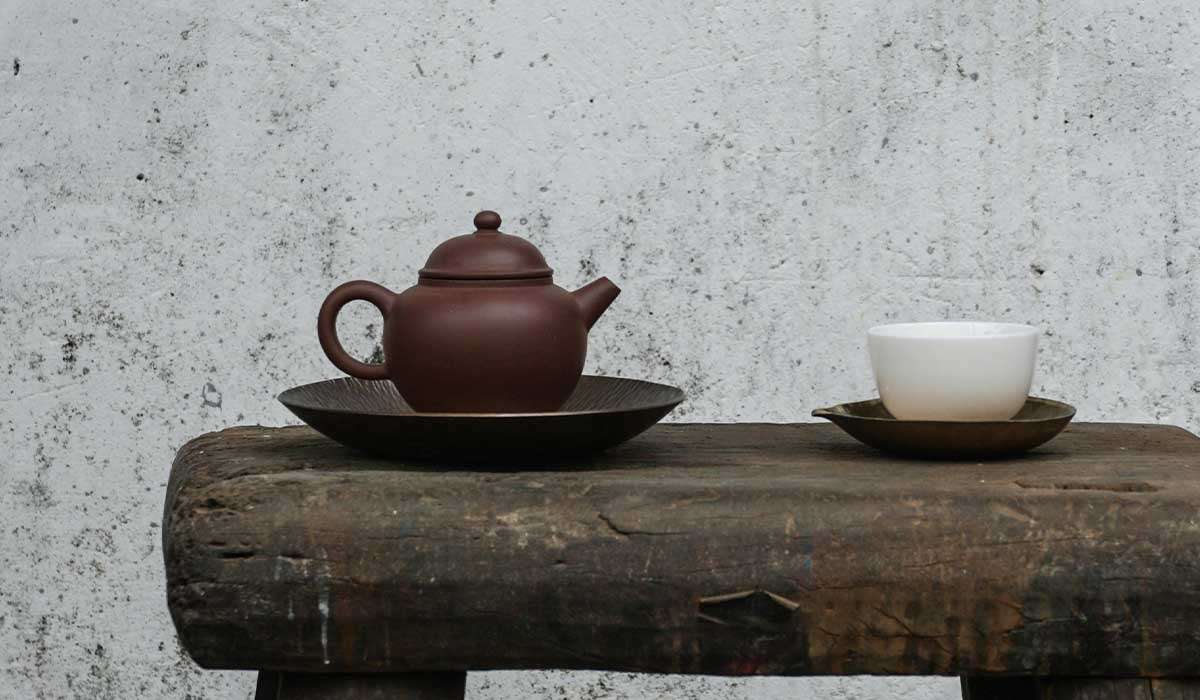
The 19 best things to do in Tokyo
Nestled in the heart of Tokyo, the Sakurai Tea Experience offers a serene escape from the city’s hustle and bustle, inviting guests into the refined world of Japanese tea. This minimalist tea salon, founded by tea master Shinya Sakurai, is dedicated to preserving and innovating the traditional art of Japanese tea, presenting it in a contemporary and accessible manner. Here, visitors embark on a sensory journey that explores the depth and diversity of Japanese tea culture through meticulously crafted tastings and ceremonies.
The Art of Tea in a Modern Setting
The Sakurai Tea Experience is set in a space that combines traditional Japanese aesthetics with modern design principles. The interior, characterized by its use of natural materials such as wood and stone, creates a tranquil atmosphere that enhances the tea-tasting experience. Upon entering, guests are greeted by the sight of a carefully curated selection of teas, each with its own story and origin, displayed in elegant glass jars along the walls.
A Curated Tea Tasting Journey
At the heart of the Sakurai Tea Experience is the tea tasting menu, designed by Sakurai himself to guide guests through the diverse world of Japanese tea. From the grassy sweetness of sencha to the deep umami of gyokuro, each tea is presented in a way that highlights its unique characteristics. The tasting is not just about the flavors, but also about understanding the history, cultivation, and preparation techniques behind each tea variety.
The Ceremony of Preparation
What sets the Sakurai Tea Experience apart is the emphasis on the ceremonial aspect of tea preparation. Guests watch as tea master Sakurai and his team perform the art of tea-making with precision and grace, using traditional utensils in a modern context. The water temperature, brewing time, and even the choice of teaware are carefully considered to ensure that each cup of tea expresses its full potential. This attention to detail turns the act of tea drinking into a meditative and enlightening experience.
Beyond Tea: A Sensory Experience
The experience extends beyond tea to include a selection of tea-infused sweets and dishes that complement the flavors of the teas. These culinary creations, made from seasonal and high-quality ingredients, add another layer to the sensory journey, allowing guests to explore the versatility of tea as a culinary element.
Workshops and Learning
For those looking to delve deeper into the world of Japanese tea, the Sakurai Tea Experience offers workshops and classes. These sessions provide hands-on learning opportunities, from tea leaf roasting to the intricacies of the Japanese tea ceremony, under the guidance of skilled tea masters. It’s a chance to gain a deeper appreciation of the craft and culture of tea, making the experience enriching for both novices and connoisseurs alike.
A Modern Homage to Tradition
The Sakurai Tea Experience is more than just a tea salon; it’s a bridge between the rich traditions of Japanese tea culture and the contemporary lifestyle of Tokyo. It invites guests to slow down, savor the moment, and immerse themselves in the nuanced flavors and rituals of tea. Through its minimalist setting, curated tastings, and educational offerings, the Sakurai Tea Experience provides a unique and memorable way to connect with the art and soul of Japanese tea.
Azuki to Kouri: Crafting Art from Ice
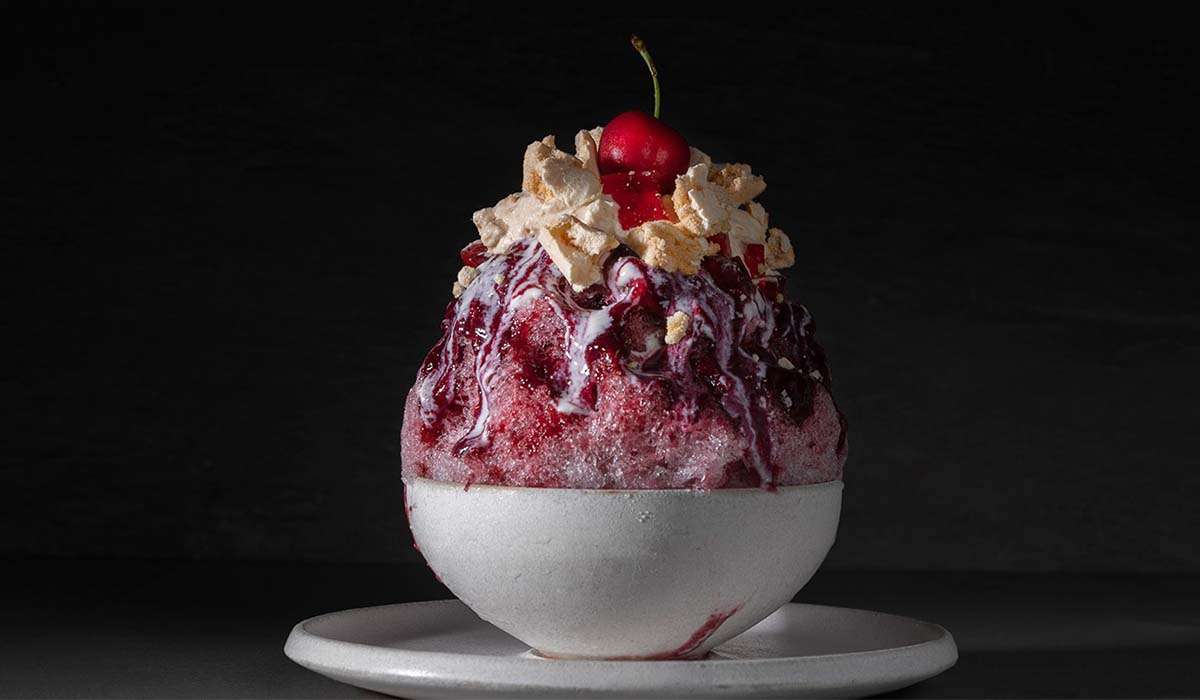
The 19 best things to do in Tokyo
In the heart of Tokyo, a city known for its relentless innovation in culinary arts, Azuki to Kouri stands out as a testament to the creative and meticulous craft of kakigori, Japanese shaved ice. Unlike the coarse, snow-cone-like shaved ice many are familiar with, Azuki to Kouri elevates kakigori to an art form, blending traditional flavors with modern gastronomy techniques to create masterpieces that are as stunning to behold as they are delightful to taste.
The Foundation: Premium Ingredients
The secret behind the extraordinary kakigori at Azuki to Kouri begins with the selection of premium ingredients. The ice, not just any ice, is made from natural spring water, carefully frozen to achieve a crystal-clear quality. This meticulous process ensures that the shaved ice has a silky texture that melts instantly upon touching the tongue, a characteristic that sets it apart from its counterparts.
Azuki beans, a staple in Japanese sweets, are sourced with equal care. Azuki to Kouri uses only the finest beans, simmered slowly to achieve a sweet paste that is both rich and nuanced, embodying the depth of traditional Japanese flavors. The azuki paste is then layered with the shaved ice, creating a harmonious blend of sweetness and freshness.
Artistry in Every Shave
The act of shaving the ice at Azuki to Kouri is where the magic truly happens. Using a special machine that shaves the ice to an almost ethereal thinness, the artisans at the shop craft each serving with precision. The ice flakes are so fine that they resemble fresh snowfall, creating a base that is both light and airy.
Upon this delicate canvas of ice, layers of flavors are added. Beyond the classic azuki, Azuki to Kouri experiments with a variety of seasonal and innovative toppings, from fresh fruit and creamy custards to artisanal syrups made from natural ingredients. Each creation is a balance of flavors and textures, from the smoothness of the ice to the gentle bite of the toppings.
A Visual and Sensory Delight
What makes the kakigori at Azuki to Kouri truly stand out is the attention to presentation. Each bowl is a work of art, meticulously assembled to not only taste exquisite but also look breathtaking. The layers of ice and toppings are arranged to create a visually appealing masterpiece, often garnished with edible flowers or delicate sweets, making each serving a feast for the eyes.
More Than Just Dessert
Visiting Azuki to Kouri is an experience that transcends the act of eating dessert. It’s an invitation to appreciate the subtleties of Japanese culinary traditions, where every detail, from the quality of the ingredients to the aesthetics of presentation, is considered with reverence. The shop offers a tranquil atmosphere where guests can enjoy their kakigori while reflecting on the craftsmanship and artistry that went into its creation.
Workshops and Learning : The 19 Best Things To Do In Tokyo
Kuge Crafts: Embracing Imperfection through Kintsugi
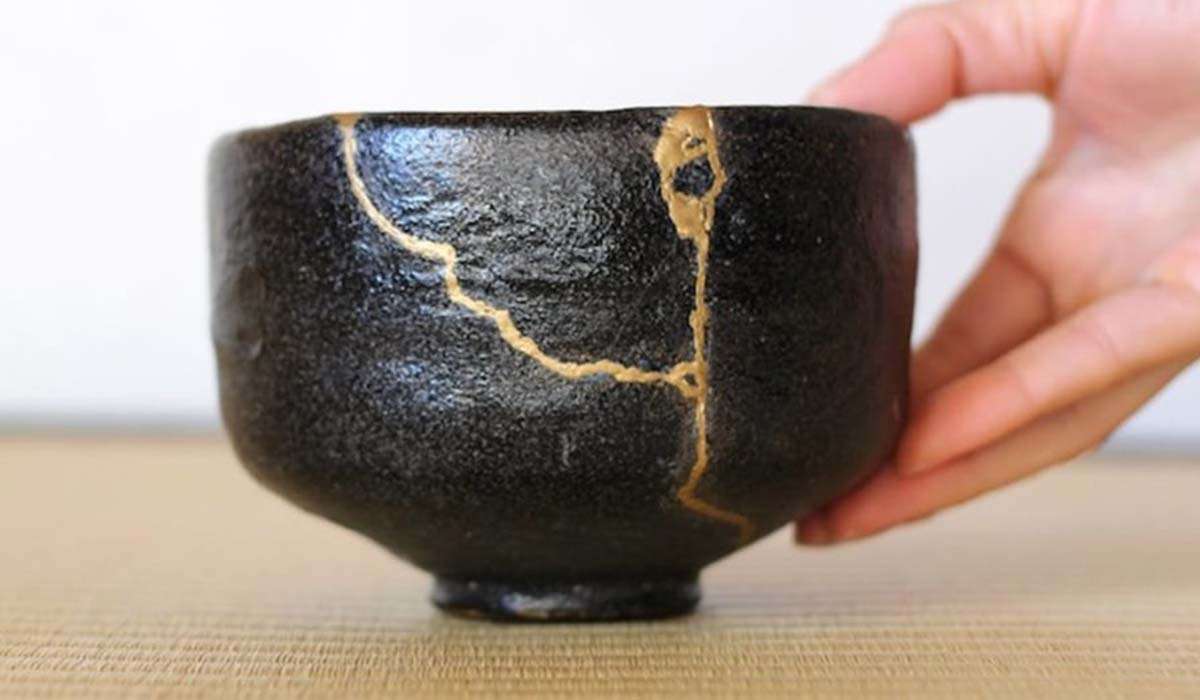
The 19 best things to do in Tokyo
In the bustling metropolis of Tokyo, a city that seamlessly blends the ancient with the avant-garde, Kuge Crafts stands as a beacon for those looking to delve deeper into the traditional Japanese art of kintsugi. This unique craft, which translates to “golden joinery,” is more than just a method of repairing broken pottery; it’s a philosophy that embraces imperfection, highlighting cracks and breaks with gold, silver, or platinum, and in doing so, creates something uniquely beautiful and resilient.
The Philosophy Behind Kintsugi
Kintsugi is rooted in the Japanese aesthetic of wabi-sabi, which finds beauty in the flawed or imperfect. The practice began in the late 15th century when a shogun sent a damaged Chinese tea bowl back to China for repairs. Upon its return, he found it had been mended with unsightly metal staples. This prompted Japanese craftsmen to find a more aesthetically pleasing method of repair, thus giving birth to kintsugi. This art form not only restores functionality to broken objects but also transforms them into works of art, imbued with new life and meaning.
Hands-on Learning at Kuge Crafts
Kuge Crafts offers a unique opportunity for both locals and visitors to learn the art of kintsugi firsthand. Their workshops are designed to be accessible, requiring no prior experience with pottery or crafts. Participants are guided through the kintsugi process, from preparing the adhesive to mixing the gold dust that will adorn the cracks of their broken pieces.
The workshops are not just about learning a new skill; they’re an invitation to slow down and reflect. Each participant works on a piece of pottery that, broken and considered useless by most standards, is given a new lease on life. The act of repairing pottery in this way becomes a meditative process, encouraging mindfulness and a deeper appreciation for the beauty in imperfection.
The Kuge Crafts Experience
What sets Kuge Crafts apart is its dedication not only to preserving this traditional art form but also to making it relevant for contemporary audiences. The studio provides all the materials needed for the workshop, including pottery pieces that participants can choose to work on. However, attendees are also encouraged to bring their own broken items, lending a personal touch to the experience and making the act of repair even more meaningful.
Beyond the technical skills acquired during the workshop, participants leave with a profound understanding of kintsugi’s underlying philosophy. They learn to see the breaks and repairs not as flaws but as important parts of the object’s history and character. This perspective, once applied beyond the realm of pottery, encourages a more accepting and appreciative view of life’s imperfections.
A Journey of Discovery
Kuge Crafts’ kintsugi workshops offer more than just an introduction to a traditional craft; they offer a journey of discovery. Participants not only uncover the beauty in broken things but also connect with a deeper aspect of Japanese culture that values resilience, transformation, and the stories that objects carry within them. Whether you’re a seasoned artist or someone simply looking to explore Japanese traditions, Kuge Crafts provides a welcoming space to learn, create, and find beauty in the broken.
Japanese Tea Ceremony: Where Tradition Brews in Tokyo
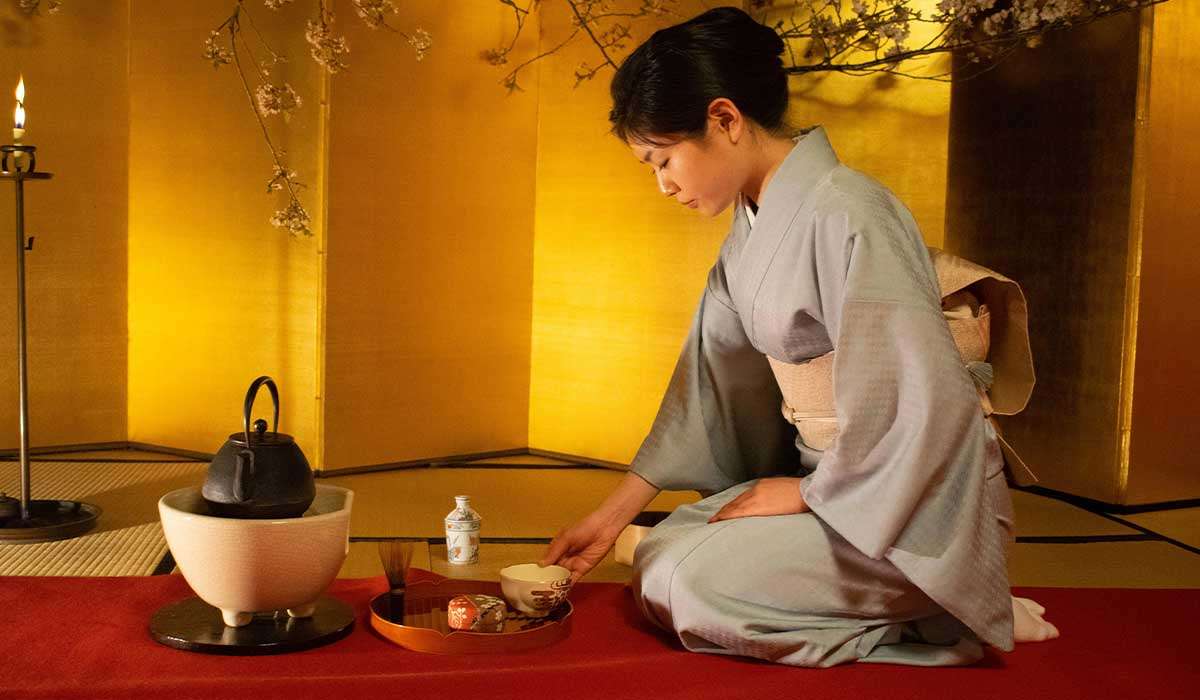
The 19 best things to do in Tokyo
The Japanese tea ceremony, known as “chanoyu” or “sado,” is a cherished cultural activity that embodies harmony, respect, purity, and tranquility. It’s a ritualistic preparation and serving of matcha, powdered green tea, that has been an integral part of Japanese culture for centuries. For visitors to Tokyo looking to immerse themselves in this traditional practice, there are several places where you can participate in or observe a tea ceremony, each offering a unique glimpse into the artful blend of simplicity and complexity that defines this cultural treasure.
Happo-en
Nestled in the heart of Tokyo, Happo-en offers visitors the chance to experience a tea ceremony in its serene Japanese garden setting. The garden, with its meticulously maintained bonsai trees, koi ponds, and seasonal flowers, provides a perfect backdrop for a tea ceremony. Happo-en’s tea house, Shosei-an, hosts traditional tea ceremonies where guests can learn about the history and etiquette of the ceremony while enjoying the tranquil garden views.
The Way of Tea Room in Hamarikyu Gardens
Hamarikyu Gardens, a spacious public park near Tokyo Bay, features a traditional tea house set on an island within a tidal pond, offering a unique setting for tea ceremony experiences. The garden’s historical significance and natural beauty enhance the tea ceremony, making it a memorable experience for participants. Visitors can enjoy matcha and traditional Japanese sweets while overlooking the peaceful waters and landscaped gardens, a stark contrast to the skyscrapers visible in the distance.
Tea Ceremony Experience Ju-An
Located in the Shibuya area, Tea Ceremony Experience Ju-An is run by English-speaking hosts who provide a welcoming environment for those looking to learn about and participate in a Japanese tea ceremony. The experience is designed for both beginners and those familiar with Japanese culture, offering insights into the philosophical and aesthetic considerations behind the ceremony. It’s an intimate setting that allows for hands-on participation and a deeper understanding of this intricate practice.
The Japanese Tea Ceremony Room at Hotel Chinzanso Tokyo
Hotel Chinzanso Tokyo, known for its luxurious accommodations and exquisite gardens, also offers guests and visitors the opportunity to partake in a traditional tea ceremony. The ceremony is held in a dedicated tea ceremony room overlooking the hotel’s historic Japanese garden. This experience combines the elegance of the hotel setting with the traditional aspects of the tea ceremony, providing a unique cultural experience amidst one of Tokyo’s most beautiful gardens.
Edo-Tokyo Open Air Architectural Museum
For those interested in the historical context of the tea ceremony, the Edo-Tokyo Open Air Architectural Museum offers a unique setting. The museum, located in Koganei Park, features reconstructed historical buildings from the Edo period, including a tea house where visitors can experience a tea ceremony. This setting provides insight into the traditional architectural styles and garden designs that have been associated with the tea ceremony for centuries.
Participating in or observing a Japanese tea ceremony is a profound way to connect with the culture and history of Japan. Each of these venues in Tokyo offers a unique perspective on this age-old tradition, allowing visitors to step back in time and experience the meditative and meticulous preparation of tea. Whether set in a historical garden, a modern hotel, or a traditional tea room, the experience of a Japanese tea ceremony is an unforgettable part of any visit to Tokyo, inviting guests to embrace the art of slow living and mindfulness.
Nightlife and Entertainment:The 19 Best Things To Do In Tokyo
The Bellwood: A Symphony of Style and Spirits
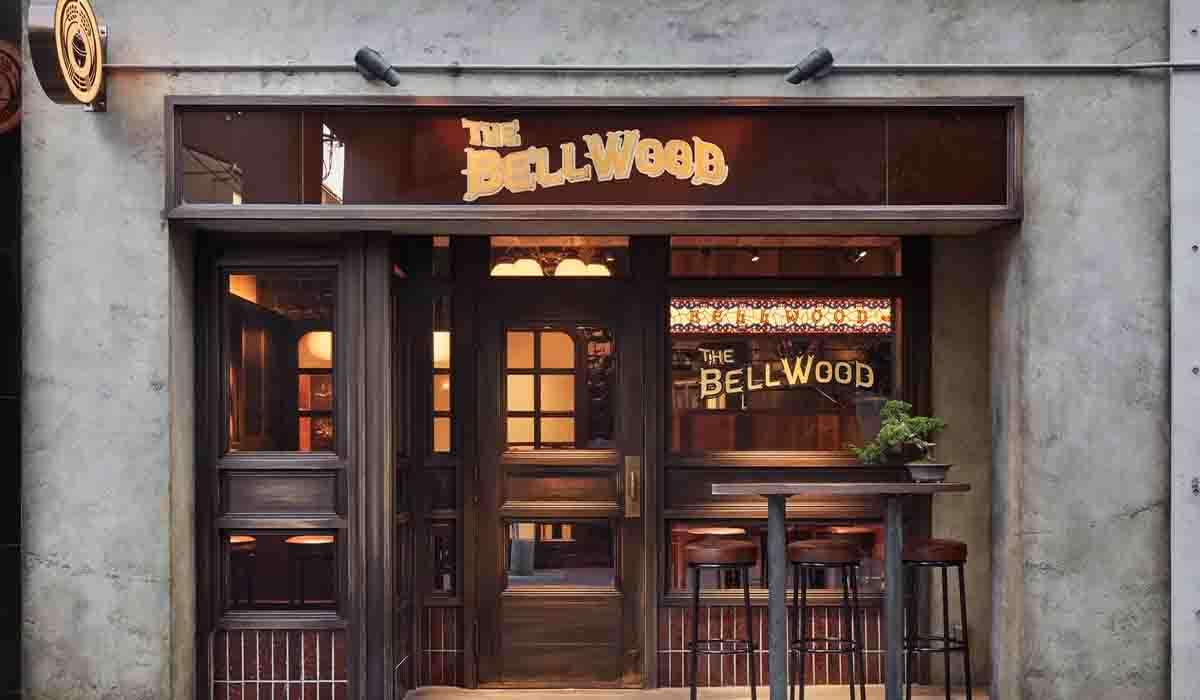
The 19 best things to do in Tokyo
Tucked away in the bustling heart of Tokyo, The Bellwood stands out as a beacon for those in pursuit of an exceptional cocktail experience. This stylish bar, with its blend of modern elegance and a warm, inviting atmosphere, has quickly become a favorite among locals and visitors alike. The Bellwood’s ambiance and its unique cocktail offerings make it a must-visit destination for anyone looking to immerse themselves in Tokyo’s vibrant nightlife.
Ambiance That Speaks Volumes
As you step into The Bellwood, you’re greeted by an interior that balances contemporary chic with classic comfort. The design is thoughtful, featuring a blend of natural wood, soft lighting, and plush seating that invites guests to relax and unwind. The bar’s layout encourages interaction, with an open bar area where patrons can watch as skilled bartenders craft their drinks with precision and flair. It’s this attention to detail in both design and service that creates an ambiance of sophistication without pretension, making every visitor feel welcomed.
A Cocktail Menu That Tells a Story
The Bellwood’s cocktail menu is a testament to the creativity and expertise of its bartenders. Each drink is carefully crafted to tell a story, blending unique ingredients with traditional techniques to create flavors that are both familiar and entirely new. The menu is seasonal, reflecting the bar’s commitment to using fresh, high-quality ingredients that capture the essence of the moment.
Signature cocktails at The Bellwood might include a twist on the classic martini, infused with Japanese botanicals for a local flavor, or an original creation that pairs unexpected ingredients for a delightful surprise. The bar also pays homage to the classics, offering perfectly executed versions of traditional cocktails for purists. For those looking for something truly unique, the bartenders are more than happy to craft a bespoke drink tailored to your tastes.
Unique Offerings That Stand Out
What sets The Bellwood apart are its unique cocktail offerings that incorporate elements of Japanese culture and ingredients. From yuzu and sakura to umeshu (plum wine) and shochu, the bar’s menu is a celebration of local flavors, presented with a global twist. One of the standout offerings might be a cocktail that uses matcha in a sophisticated, adult beverage, marrying the bitterness of the tea with the sweetness of a complementary spirit.
An Experience Beyond the Glass
The experience of visiting The Bellwood is about more than just enjoying a great drink; it’s about the stories shared over the bar, the laughter that fills the air, and the memories created in this stylish space. The bar hosts regular events, from tastings led by renowned distillers to music nights that showcase local talent, adding another layer to its already rich ambiance.
The Heart of Tokyo’s Nightlife
In a city known for its dynamic nightlife, The Bellwood shines as a gem worth discovering. Whether you’re a cocktail aficionado or simply in search of a pleasant evening out, this bar offers an experience that combines the best of Tokyo’s modernity with the timeless appeal of a well-made drink. The Bellwood isn’t just a bar; it’s a destination that promises an evening filled with discovery, delight, and a dash of magic, right in the heart of Tokyo.
Koffee Mameya Kakeru: A Coffee Connoisseur’s Dream
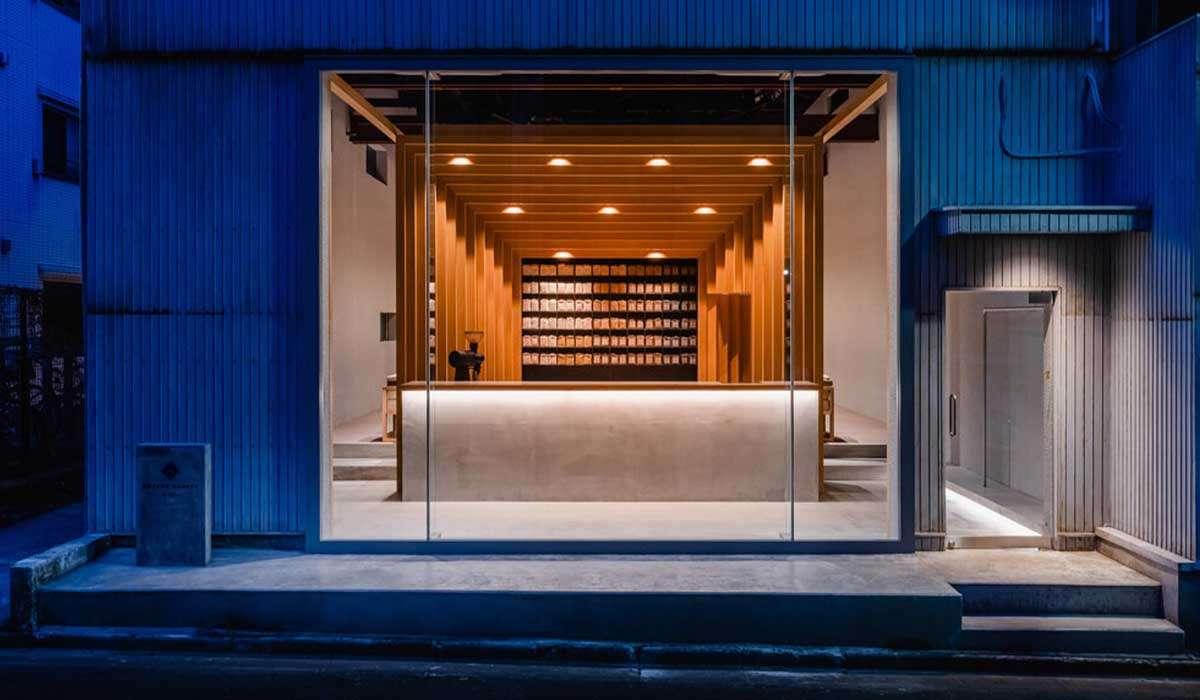
The 19 best things to do in Tokyo
In the bustling city of Tokyo, where the coffee culture is as rich and varied as the city itself, Koffee Mameya Kakeru emerges as a beacon for coffee aficionados. This isn’t your typical coffee shop; rather, it’s a unique concept space dedicated to elevating the coffee drinking experience to an art form. Founded on the philosophy of meticulous coffee bean selection and brewing perfection, Koffee Mameya Kakeru offers a personalized journey through the world of coffee, making it a must-visit for anyone seeking to deepen their appreciation for this beloved beverage.
The Philosophy: Beyond the Cup
Koffee Mameya Kakeru is the brainchild of coffee maestro Eiichi Kunitomo, who envisions the space as a place where coffee isn’t just consumed but is deeply understood and appreciated. The concept is inspired by the traditional Japanese tea house, where every detail of the tea ceremony is considered and revered. Similarly, Koffee Mameya Kakeru treats coffee brewing and tasting with the same level of respect and attention to detail, aiming to educate its visitors about the nuances of coffee flavors, origins, and brewing methods.
A Curated Coffee Experience
Upon entering Koffee Mameya Kakeru, guests are greeted not by the usual café setup but by a minimalist counter where the focus is squarely on the coffee. The baristas, or coffee sommeliers, engage with each visitor to understand their preferences and guide them through a curated selection of beans from around the world. This personalized approach allows guests to explore coffees that match their taste profile, from fruity African beans to bold South American blends.
Masterful Brewing, Tailored to You
What sets Koffee Mameya Kakeru apart is the precision and care put into brewing each cup of coffee. Depending on the chosen beans and the guest’s preferences, the baristas employ various brewing methods, from pour-over to Aeropress, ensuring that each cup highlights the beans’ best characteristics. This dedication to brewing excellence allows guests to experience the full spectrum of flavors coffee has to offer, from delicate floral notes to rich, chocolatey undertones.
Coffee Education and Engagement
Koffee Mameya Kakeru is committed to not just serving coffee but also educating its patrons about it. The space regularly hosts workshops and tasting sessions where coffee enthusiasts can learn about different coffee varieties, the impact of processing methods on flavor, and the art of home brewing. These sessions are designed to deepen guests’ knowledge of coffee and enhance their appreciation for the craft behind their favorite beverage.
A Unique Coffee Community
More than just a coffee bar, Koffee Mameya Kakeru is a community hub for coffee lovers. It’s a place where novices and connoisseurs alike can share their passion for coffee, exchange knowledge, and discover new flavors together. The welcoming and informative atmosphere fosters a sense of camaraderie among guests, making every visit a rewarding experience.
Conclusion
Tokyo, a city where the past and the future coexist in a seamless tapestry, offers a kaleidoscope of experiences that cater to every imaginable interest and passion. From the serene rituals of the tea ceremony at places like Happo-en to the cutting-edge digital art installations of teamLab Borderless, the city is a living museum of the traditional and the technological. The meticulous art of kintsugi at Kuge Crafts and the innovative coffee culture at Koffee Mameya Kakeru exemplify Tokyo’s unique ability to honor its heritage while embracing the new. Meanwhile, the vibrant nightlife at The Bellwood and the treasure hunt for antiques at the Oedo Antique Market showcase the city’s dynamic and eclectic spirit.
Tokyo invites you to dive into its bustling streets and quiet alleyways, to discover not just the iconic landmarks but also the hidden gems that give the city its soul. Each neighborhood tells its own story, from the historic charm of Asakusa to the trendy streets of Shibuya and Harajuku. Beyond the well-trodden path lie countless opportunities to experience the city in a way that resonates personally with you. Whether it’s finding tranquility in the vast green spaces of Yoyogi Park and Shinjuku Gyoen, or exploring the culinary delights of Nakano Broadway and Kappabashi Street, Tokyo is a city that rewards curiosity.
As you venture through Tokyo, let the blend of tradition and modernity be your guide. Embrace the opportunity to participate in age-old cultural practices, and marvel at the innovations that propel the city into the future. Tokyo is a place where every turn brings a new discovery, and each experience enriches your understanding of this multifaceted city.
We encourage you to explore Tokyo with an open heart and an adventurous spirit. Seek out your own favorite spots, create your own path, and immerse yourself in the diversity of experiences the city has to offer. In doing so, you’ll not only witness the extraordinary blend of tradition and modernity that defines Tokyo but also connect with the city on a deeper, more personal level. Tokyo is waiting to reveal its secrets to those willing to look beyond the surface and discover the true essence of this incredible metropolis.
Share your Vacation Movement with instagram page @desmotravel
Share your Vacation Movement with Facebook page @desmotravel

